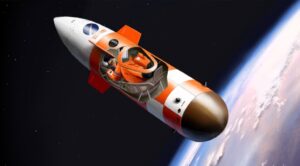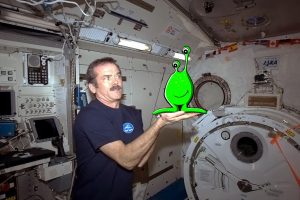Copenhagen Suborbitals Projects on Sending Amateur Astronauts to Space
18th May 2021
For almost a hundred years, humanity has been striving to firmly establish itself in space and is making considerable progress in this, while teams like Copenhagen Suborbitals contribute its share to this mission. Today, thousands of spacecraft in Earth orbits perform dozens of tasks: commercial, scientific, government, and global. Astronauts live on the ISS for months, go into outer space, and very soon will once again land on the moon to build a permanent base there. Space exploration requires billion-dollar budgets, huge resources, and hundreds of special training hours.
Enthusiasts from the Danish company Copenhagen Suborbitals are breaking these stereotypes, aiming to send an ordinary person into space at a minimal cost.
Into Space on Enthusiasm
Copenhagen Suborbitals was founded in 2008 by entrepreneur and inventor Peter Madsen and space engineer Kristian von Bengtson. The two Danes clearly decided that they would build rockets for suborbital passenger flights without attracting investment.
This means that for over ten years, Copenhagen Suborbitals has been a 100% non-profit organisation supported by its employees and private donations. None of the people working on Copenhagen Suborbitals projects get paid, and rockets are built using common materials that can be bought at hardware stores, i.e., hoses, valves, and other parts.
10 Copenhagen Suborbitals Projects in 10 Years
The first HEAT-1X rocket was built in 3 years. It was almost 10 metres high, contained a single passenger capsule mock-up, and was launched from a mobile platform in the Black Sea. Unfortunately, this rocket did not hit the list of successful Copenhagen Suborbitals projects because it could not be guided. After the lift-off, the rocket deviated from its intended trajectory, and the engine had to be turned off at an altitude of 1400 m. The rocket entered the water at high speed and fell apart. Despite this, the event caught the media’s eye, and soon, the company became well-known.
From 2012 to 2018, five more attempts to create and launch a spacecraft followed. This time, the carriers became more powerful and sophisticated. Smaragd, Sapphire, HEAT-2X, Nexø 1 and 2 soared into the air from an offshore platform in the Baltic, bringing CS closer to its main goal of proving that amateurs can build functional rockets without the use of multi-million-dollar budgets.
Copenhagen Suborbitals Spica is the Company’s Crown Jewel
In 2019, the company started on its latest project, Spica. It became the logical continuation of all past work. Copenhagen Suborbitals Spica rocket has a complete manned system in development, including an engine, a single passenger capsule, and the launcher itself.
The first Copenhagen Suborbitals Spica flight with an amateur astronaut onboard will last approximately 9 minutes. The rocket will reach 105 km altitude, 5 km above the Karman line, after which space begins. After that, the capsule will be stabilized and start its descent. At an altitude of 4 km, parachutes will deploy, and the capsule will make a smooth landing in the Baltic Sea, where a rescue team will pick it up.
If Copenhagen Suborbitals Spica flight is successful, Denmark will become the 4th country in the world after the USA, Russia, and China, to make the ninth suborbital flight in world history.
The company is a step away from its ultimate goal and thanks everyone who can support Copenhagen Suborbitals projects financially.






Thank you for your comment! It will be visible on the site after moderation.